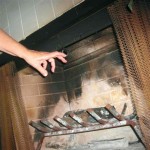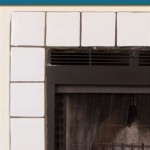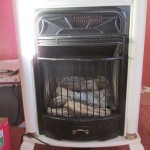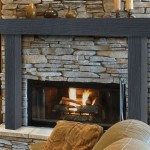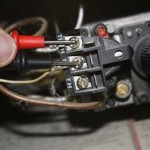Understanding Gas Fireplace Thermocouple Wiring
Gas fireplaces offer warmth and ambiance to a home, providing an efficient and aesthetically pleasing heating solution. A crucial component in their safe and reliable operation is the thermocouple. This device, often overlooked, plays a vital role in ensuring gas flow only occurs when a pilot light is present, preventing dangerous gas leaks. Understanding the thermocouple's function and wiring is essential for homeowners and technicians involved in gas fireplace maintenance and repair.
The thermocouple is a safety device that generates a small electrical current when heated. This current is used to keep the gas valve open, allowing gas to flow to the main burner. If the pilot light goes out, the thermocouple cools down, the electrical current ceases, and the gas valve automatically shuts off, preventing unburned gas from accumulating. This mechanism is a fundamental safety feature in all gas appliances utilizing pilot ignition systems.
This article will delve into the intricacies of thermocouple wiring in gas fireplaces, explaining its function, troubleshooting common issues, and providing guidance on replacement and safe maintenance practices. Correct wiring and a properly functioning thermocouple are paramount for safe and efficient gas fireplace operation.
The Function of a Thermocouple in a Gas Fireplace
A thermocouple operates on the principle of the Seebeck effect, a phenomenon where a temperature difference between two dissimilar electrical conductors or semiconductors creates a voltage difference between them. In a gas fireplace, the thermocouple consists of two dissimilar metal wires joined at one end, forming a junction. This junction is positioned in the flame of the pilot light.
When the pilot light is lit, the heat from the flame warms the thermocouple junction. This temperature difference generates a small DC voltage, typically in the millivolt range (usually between 20-30 millivolts). This voltage creates a current flow through the circuit, which includes the gas valve's electromagnet. The electromagnet, energized by the thermocouple current, holds the gas valve open, allowing gas to flow to the main burner when the fireplace is activated.
If the pilot light extinguishes, the thermocouple cools down. As the temperature of the junction decreases, the voltage generated decreases proportionally. When the voltage drops below a certain threshold (usually around 10 millivolts), the electromagnet in the gas valve loses its strength and releases, causing the gas valve to close. This immediate shut-off prevents the flow of unburned gas, mitigating the risk of gas leaks and potential explosions.
The thermocouple is a passive device, meaning it doesn't require an external power source to operate. It relies solely on the heat from the pilot light to generate the necessary electrical current. This inherent simplicity and reliability make it a critical safety component in gas fireplaces.
Many modern gas fireplaces utilize a similar but slightly different component called a thermopile. While both generate electricity from heat, a thermopile is essentially a series of thermocouples connected together. This arrangement produces a higher voltage, often sufficient to power electronic ignition systems and other low-voltage components within the fireplace. The principles of operation and the safety function remain the same: if the pilot light is absent, the gas valve is closed.
Troubleshooting Common Thermocouple Wiring and Function Issues
Several issues can arise with a gas fireplace thermocouple, leading to operational problems. The most common symptom is the inability to keep the pilot light lit after releasing the pilot button. This indicates that the thermocouple is not generating sufficient voltage to hold the gas valve open.
A primary cause of thermocouple failure is contamination of the junction. Soot, dust, and other debris can accumulate on the thermocouple, insulating it from the heat of the pilot flame. This reduces the temperature difference across the junction, lowering the voltage output. Cleaning the thermocouple with fine steel wool or a specialized thermocouple cleaner can often restore its functionality.
Corrosion at the thermocouple connections is another frequent problem. The connections between the thermocouple and the gas valve, as well as any inline connectors, can corrode over time, increasing electrical resistance and reducing the current flow. Cleaning these connections with a wire brush and applying a small amount of electrical contact cleaner can improve conductivity.
A bent or damaged thermocouple can also malfunction. If the thermocouple is bent away from the pilot flame, it won't receive sufficient heat to generate the required voltage. Similarly, if the thermocouple is physically damaged, the internal wires may be broken or shorted, rendering it ineffective. Replacing a damaged thermocouple is typically the best solution.
Testing the thermocouple's voltage output is a crucial step in troubleshooting. This requires a multimeter capable of measuring millivolts. With the pilot light lit and the thermocouple junction heated, the voltage between the thermocouple's terminals should be within the manufacturer's specified range (usually 20-30 millivolts). A voltage reading significantly below this range indicates a faulty thermocouple that needs replacement.
In some cases, the gas valve itself may be the source of the problem. If the gas valve's electromagnet is weak or damaged, it may not be able to hold the valve open even with a properly functioning thermocouple. Testing the gas valve's resistance can help determine if it's the cause of the issue. However, gas valve repairs and replacements should only be performed by qualified technicians due to the inherent safety risks associated with gas appliances.
Thermocouple Replacement and Safe Maintenance Practices
Replacing a thermocouple is a relatively straightforward process, but it's essential to follow proper safety precautions. Before starting any work on a gas fireplace, always turn off the gas supply to the unit. The gas shut-off valve is typically located near the fireplace or on the gas supply line leading to it.
Allow the fireplace to cool completely before attempting to remove the old thermocouple. Disconnect the thermocouple from the gas valve by unscrewing the retaining nut. Note the routing of the thermocouple wire, as the new thermocouple should be installed in the same manner to avoid contact with hot surfaces or moving parts.
Remove the old thermocouple from its mounting bracket or clip. Install the new thermocouple in the same location, ensuring that the junction is positioned correctly within the pilot flame. The junction should be fully engulfed by the flame for optimal heat transfer and voltage generation.
Connect the new thermocouple to the gas valve, tightening the retaining nut securely. Avoid overtightening, as this can damage the threads or the thermocouple itself. Turn the gas supply back on and test the fireplace to ensure that the pilot light stays lit after releasing the pilot button. If the pilot light still fails to stay lit, double-check the connections and the thermocouple's position in the flame.
Regular maintenance is key to preventing thermocouple problems. Inspect the thermocouple and pilot light assembly annually, cleaning any accumulated soot or debris. Ensure that the pilot flame is clean and blue, with no yellow or orange tips, which can indicate incomplete combustion and soot buildup. Periodically check the thermocouple connections for corrosion and clean them as needed.
For complex issues or if unsure about any aspect of the repair process, consulting a qualified gas fireplace technician is strongly recommended. Working with gas appliances involves inherent risks, and professional expertise is essential to ensure safe and reliable operation.
By grasping the fundamental principles of thermocouple function, understanding common troubleshooting techniques, and implementing safe maintenance practices, homeowners can ensure the continued safe and efficient operation of their gas fireplaces.

How To Connect A Nest Thermostat Gas Fireplace Ohmefficient
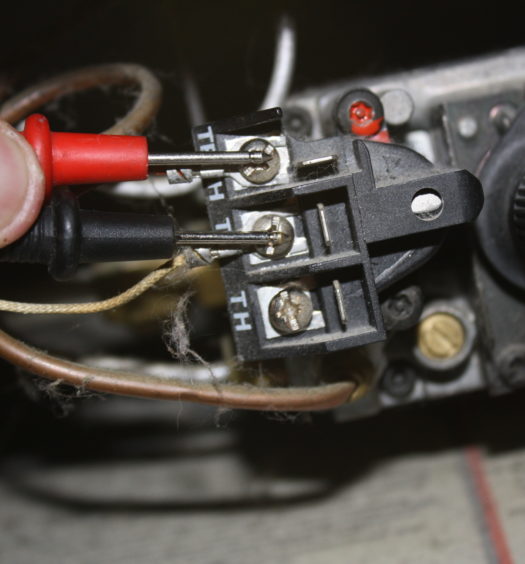
How To Test Your Thermopile Www Mygasfireplacerepair Com

How To Test Your Thermopile Www Mygasfireplacerepair Com

How To Connect A Nest Thermostat Gas Fireplace Ohmefficient

Gas Fireplace Repairs Chimney Sweeps Of America

Diy Gas Fireplace Won T Light How To Clean Your Thermopile And Thermocouple

Identifying Gas Fireplace Parts Www Mygasfireplacerepair Com

How To Test Your Thermopile Www Mygasfireplacerepair Com

Propane Natural Gas Fireplace Pilot Assembly Include Tube Thermocouple And Ignitor Wire Us Fruugo Sa

What Fireplace Remote Control Works For You Skytechfireplaceremotes Com


